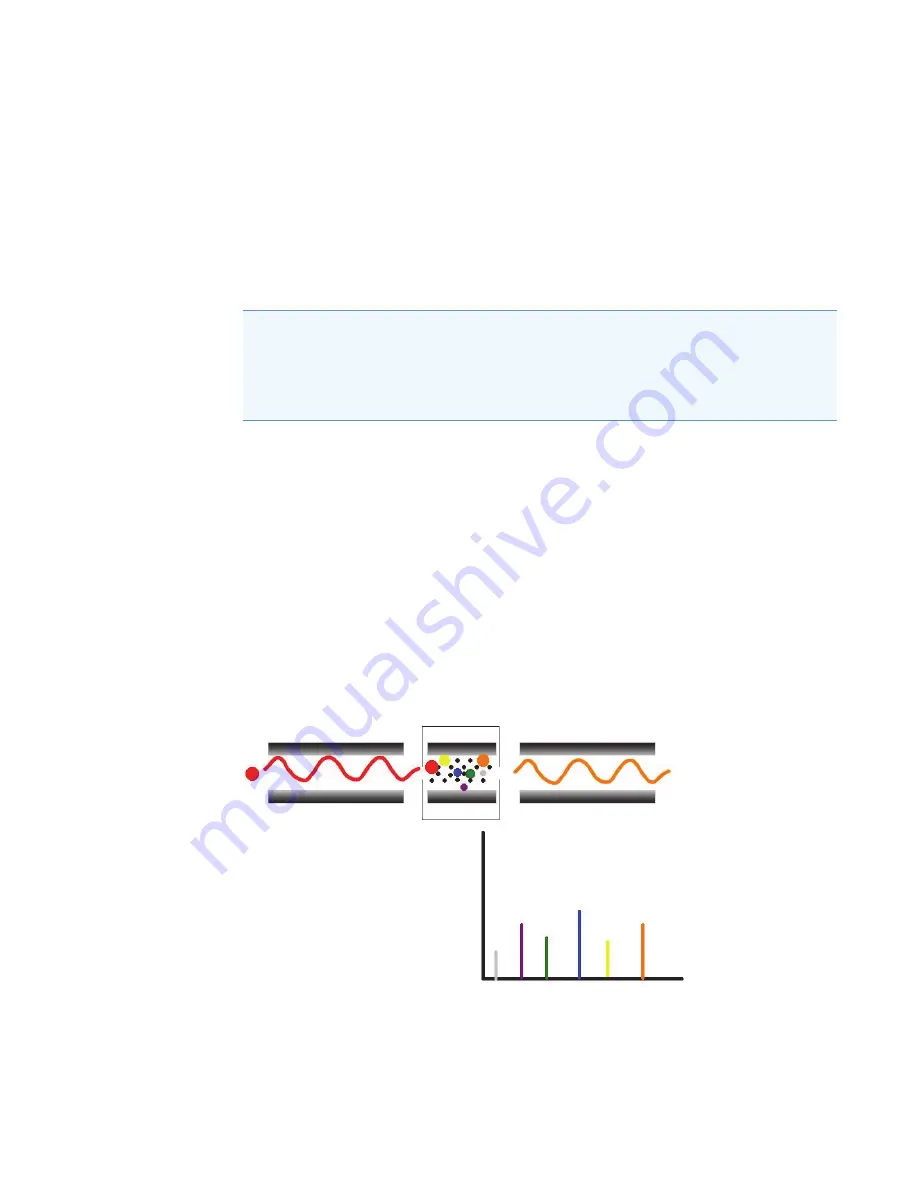
17
Scan Types
Product Scan Type
74
TSQ Altis, Quantis, and Fortis Hardware Manual
Thermo Scientific
Product Scan Type
Product scan type performs two stages of analysis (
). In the first stage, the ion source
forms ions that enter Q1, which is set to transmit ions of one
m/z
. Ions selected by this first
stage of mass analysis are called precursor ions. (As a result, Q1 is referred to as the precursor
mass analyzer, and the
m/z
of ions transmitted by the precursor mass analyzer is referred to as
the precursor set mass.) After Q1 selects the precursor ions, they enter Q2, which is
surrounded by the collision cell.
In the second stage of analysis, ions in the collision cell can fragment further to produce
product ions. Two processes produce product ions: by unimolecular decomposition of
metastable ions or by interaction with argon collision gas present in the collision cell. This
latter step is known as
collision-induced dissociation (CID)
. Ions formed in the collision cell
enter the product mass analyzer (Q3) for the second stage of mass analysis. The product mass
analyzer is scanned to obtain a mass spectrum that shows the product ions produced from the
fragmentation of the selected precursor ion.
Experiments that use a product ion scan type can determine the
m/z
values of all the product
ions from a specific precursor. These can be used to identify unknowns or as the basis for
developing an SRM experiment.
Figure 37.
Illustration of product scan type
Note
For ease of documenting the first, second, and third rod assemblies as separate
pieces of hardware, this manual refers to them as Q1, Q2, and Q3, respectively. However,
when discussing each rod assembly's function in MS/MS scan types, this manual uses the
terms
precursor mass analyzer
,
collision cell
(ion transmission device surrounded by the
collision cell), and
product mass analyzer
, respectively.
Q2
RF Only + Ar
Q1 Set
Q3 Scanning
Q3
m/z
















































